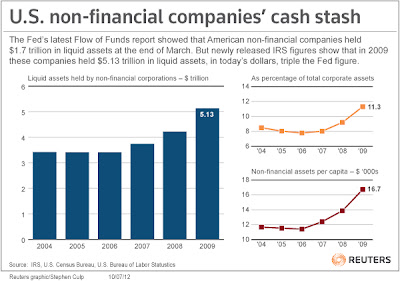Half of India Goes Dark
"Even before we could figure out the reason for yesterday's failure, we had more grid failures today," said R. N. Nayak, chairman of the state-run Power Grid Corporation. _Reuters
India's energy crisis cascaded over half the country Tuesday when three of its regional grids collapsed, leaving 620 million people without government-supplied electricity for several hours in, by far, the world's biggest blackout. Hundreds of trains stalled across the country and traffic lights went out, causing widespread traffic jams in New Delhi. Electric crematoria stopped operating, some with bodies half burnt, power officials said. Emergency workers rushed generators to coal mines to rescue miners trapped underground. _AP
A modern power infrastructure requires constant upkeep, maintenance, and piece by piece replacement, as various parts inevitably break down and go bad. If a nation -- even a nation of over 1 billion persons -- is unable to support its massive critical infrastructure, the lights will tend to go out from time to time.
Stretching from Assam, near China, to the Himalayas and the northwestern deserts of Rajasthan, the outage covered states where half of India's 1.2 billion people live and embarrassed the government, which has failed to build up enough power capacity to meet soaring demand.This is par for the course across most of sub Saharan Africa and much of third world Asia. And it is a preview of coming attractions for much of the developed world, which is being slowly transformed -- piece by piece -- into a reasonable facsimile of the third world, itself.
"Even before we could figure out the reason for yesterday's failure, we had more grid failures today," said R. N. Nayak, chairman of the state-run Power Grid Corporation. _Reuters
If people are attempting to maintain a high tech infrastructure which they do not understand, failure is guaranteed. Not merely intermittent failure, but ultimate failure.
The only alternative in such cases is to solicit outside help from those who do understand the technology.
Of course in India's case, there are large numbers of persons who could repair and upgrade the byzantine power grid. But the massive levels of corruption at every level of India's government essentially guarantees that the best persons for critical infrastructure jobs, will not be the ones who are paid to do those jobs.
In Africa, the permanent infrastructure problems are due to a lack of skilled and trainable manpower, and the general inability to pay outsiders to make up for the intrinsic lack of competence. In MENA, where average manpower competence is slightly better than in sub Saharan Africa, oil rich states can pay outside service companies to keep the power on for most of the 24 hour day, at least.
But India is a special case, with almost 1.4 billion people, and perhaps the widest population variance in basic competencies of any large modern or emerging nation -- from very high to very low.
Which makes India something of a preview of coming attractions for much of Europe. Europe's demographic picture is changing very rapidly, to resemble that of emerging nations such as India, or perhaps Brazil.
Perhaps it is time to stock up on long-burning candles?
More:
....any connection to the grid remains a luxury for many. One-third of India's households do not even have electricity to power a light bulb, according to last year's census. _AP
Power shortages and a creaky road and rail network have weighed heavily on India's efforts to industrialize. Grappling with the slowest economic growth in nine years, the government recently scaled back a target to pump $1 trillion into infrastructure over the next five years.
Major industries have their own power plants or diesel generators and are shielded from outages. But the inconsistent supply hits investment and disrupts small businesses.
High consumption of heavily subsidized diesel by farmers and businesses has fuelled a gaping fiscal deficit that the government has vowed to tackle to restore confidence in the economy. _Reuters
Of the BRICs, not a single one is up to the task of leading the global economy out of the doldrums. The opposite is more likely to be the case.
So, think! What will faltering economies in the BRIC nations do to global commodities pricing, and the global economic picture as a whole?
Labels: BRIC, India, power grid















